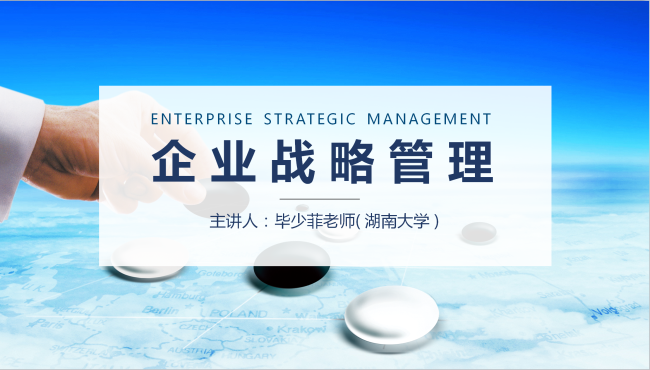
当前课程知识点:Socially-Responsible Real Estate Development: Learning to Use Impact Assessment Tools Effectively > Module 2: Environmental Impact Assessment > Readings > Methods of Environmental Impact Assessment
The readings in this module are prioritized by order.
We were unable to gain free access to this book excerpt for MOOC participants. For those without institutional access, we summarize the main points below.
This reading is taken from Methods of Environmental Impact Assessment, edited by Peter Morris and Riki Therivel. It includes the book's introduction (pages 1-11) and an excerpt from the chapter "Sustainable Development and Sustainability Appraisal" by Roy Emberton and Therivel (pages 471-472). It introduces the major steps in preparing an environmental impact assessment (EIA) and discusses the connection between EIAs and sustainable development.
The authors state that an EIA process should serve to gather and analyze information about the likely environmental impacts of a proposed project. This information should be compiled in a written environmental impact statement (EIS). The findings included in an EIA – dependent on the legal context - can be used to determine whether a project can legally proceed, simply predict the environmental effects of a project without discussing the legal ramifications, and/or analyze and discover alternatives and mitigation measures that would lessen the environmental impact of the project. Robust EIAs take into account a range of impacts such as likely effects on soil quality, plant cover, animal communities, water quality, noise, and air quality.
The authors outline a seven-step process for conducting an EIA:
Scoping
Baseline studies
Description and evaluation of baseline conditions
Impact prediction
Mitigation and monitoring proposals and prescriptions
Presentation of finding and proposals in the EIA
Proper scoping sets out the boundaries for the assessment, specifying the who, what, where, why, when, and hows of the proposed forecasting and appraisal process. Baseline studies allow for comparative analysis of alternative versions of the proposed project. This step seeks to assess the “status quo” environmental conditions of the site prior to any new development. Impact prediction explains how the proposed project is likely to alter the environmental conditions relative to this baseline. Holistic impact predictions attempt to understand primary, secondary, and cumulative impacts. The mini-lecture for this module will review the tools that enable practitioners to predict and assess impacts. The mitigation stage is meant to summarize strategies for counteracting or holding identified impacts to a minimum. The presentation of the EIA results, in an EIS, summarizes all the findings. Finally, while not included in many EIA processes, long-term monitoring can reveal whether the predicted impacts match the actual post-development results and can also be used to ensure the addition of appropriate mitigation measures. These need to be put in place by the developer, the regulator, and the community and can be part of the regulatory permission to proceed with the process.
Section 16.3 (starting on page 471) of this assigned reading reviews the role of EIAs in the growing sustainable development movement. While EIAs push development toward greater sustainability by providing a basis for barring unsound projects and encouraging mitigation of unavoidable impacts, they do not address sustainability at a system-wide level. Some practitioners suggest that EIAs should do more (than is required by current law) to incorporate sustainability concerns to increase the positive effects that projects have, while others worry this will undermine the basic effectiveness of EIAs.
Reflection questions:
1. What benefits do robust EIAs offer to the developer and to the community? What, in your view, do EIAs tend to neglect?
2. Under what circumstances are EIAs worth their cost?
3. Do you think EIAs can and should include sustainability as a key consideration? Is this their primary function? Will including sustainability as a concern strengthen or weaken their contribution to environmental protection ?
Methods of Environmental Impact Assessment
-Welcome
--Welcome
-Course Welcome
--Welcome
-Entrance Survey
-Entrance Survey
-Learning Objectives
-Course Schedule
-Meet Your Course Instructors
-Grading and Completion Criteria
--html
-Introduction
-Lectures
--html
-Readings
--Social Impact Assessment: The State of the Art
--Social Impact Assessment and Public Participation in China
-Developer Interview
--Module 1
--html
-Questions
-Assignment
--html
--html
--Peer Assessment
-Debrief
--Discuss
-Introduction
-Lectures
-Readings
--Methods of Environmental Impact Assessment
--Public Participation and Environmental Dispute Resolution
--Environmental Impact Assessment for Developing Countries in Asia
--Importance of Nonobjective Judgements
--Example Environmental Impact Statement
-Developer Interview
--html
--Module 2
--html
-Questions
-Assignment
--html
--Peer Assessment
-Debrief
--Discuss
-Introduction
--Text
-Lectures
--html
-Readings
--Introduction to Social Impact Assessment
--Effectiveness in Social Impact Assessment
--Example Social Impact Statement
-Developer Interview
--Video
--Text
-Questions
-Assignment
-Debrief
--Discuss
-Introduction
--Text
-Forest City Case Study
--Part 1
--Part 2
--Part 3
--Additional Forest City Information
-Lectures
-Readings
--Dealing with An Angry Public
--Facility Siting and Public Opposition
-Developer Interview
--Module 4
--Text
-Questions
-Assignment
--html
--SCENARIO
-Debrief
--Discuss
-Introduction
-Lectures
-Readings
--Why Would Corporations Behave in Socially Responsible Ways?
--Social Impact Assessments of Large Dams Throughout the World
--Environmental Sustainability Principles for the Real Estate Industry
-Developer Interview
--Module 5
-Questions
-Assignment
--html
--SCENARIO
-Debrief
-Further Resources
-Thank You
--Thank you for taking the course
-Acknowledgements
